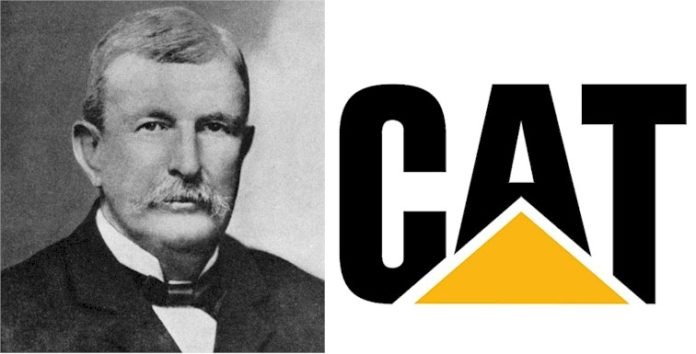The caterpillar logo and the history of the company.
Caterpillar is a household name in the manufacture of heavy vehicles used for agriculture and construction. A global giant in its own right, the company manages 25 major production plants across the globe. Half of its business comes from within the United States, with the rest of the world accounting for the other half.
Caterpillar was able to return to profitability in the mid-’80s after a tumultuous period between 1982 and 1984 when the company suffered nearly $1 billion in losses.
The History of Caterpillar
The Caterpillar Tractor Company was formed following a 1925 merger between C. L. Best Tractor Company and Holt Manufacturing Company. However, the Caterpillar name had been in use many years prior to the merger. In the early 1900s, Benjamin Holt had been looking to improve the traction and mobility of the steam tractors they were making. So in place of the wheels, he experimented with wooden tracks that were bolted to chains.
The new invention worked like a charm, so much so that one observer reportedly remarked that the machine was crawling along in the manner of a caterpillar. Holt concurred and even went ahead to name his invention “Caterpillar,” a name he would later go on to trademark. Caterpillar Tractor Company changed its official name to Caterpillar Inc. in 1986.
Early Achievements in the Caterpillar History
While Holt had been instrumental in the making of the industrial tractor decades before the Caterpillar Company was established, a number of remarkable achievements still happened after the new corporation’s formation in 1925. Some noteworthy examples can be seen in the 1930s, when Caterpillar machinery played a key role in major construction projects, including the Grand Coulee Dam, the Golden Gate Bridge, and the Mississippi Levee project. The company’s machines also supported the military efforts of the U.S. in World War II, with more than 50,000 military tractors manufactured.
Caterpillar’s Expansion in the 1950s
 Following World War II, Caterpillar started expanding into foreign territories. From the early ’50s, a 10.5-mile highway through Venezuela’s Andes Mountains was constructed with the help of CAT machines. The Indian government followed suit soon afterward, with the purchase of 93 CAT machines to help with the nation’s road network projects. CAT machines have come to the rescue in some of the most geographically challenging places, such as Antarctica, during the U.S. military’s Operation Deep Freeze III in the late 1950s.
Following World War II, Caterpillar started expanding into foreign territories. From the early ’50s, a 10.5-mile highway through Venezuela’s Andes Mountains was constructed with the help of CAT machines. The Indian government followed suit soon afterward, with the purchase of 93 CAT machines to help with the nation’s road network projects. CAT machines have come to the rescue in some of the most geographically challenging places, such as Antarctica, during the U.S. military’s Operation Deep Freeze III in the late 1950s.
Today, Caterpillar remains the world’s leading maker of heavy industrial equipment. As the company continues to seek more ways to serve its customer base, it has managed to enter new industries, such as insurance and financial products
Key Caterpillar Timelines
1885: Daniel Best from San Leandro, California, makes his first combine.
1904: Benjamin Holt makes the first caterpillar-style tractor, soon to be sold under the Caterpillar brand name.
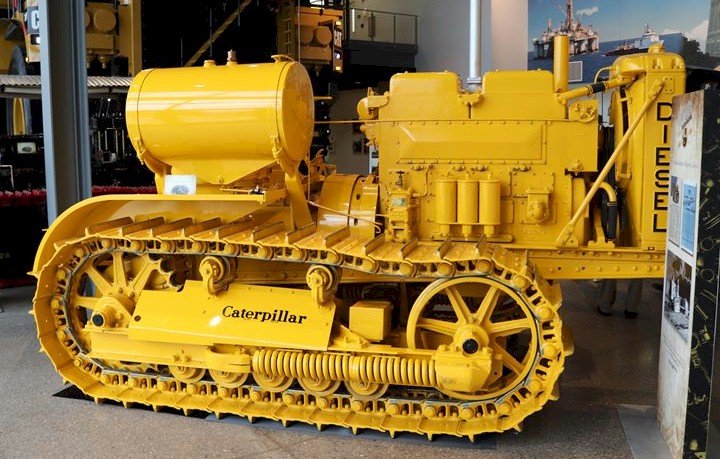 1908: Holt Manufacturing produces the first gas-powered crawlers. Holt acquires Daniel Best’s company.
1908: Holt Manufacturing produces the first gas-powered crawlers. Holt acquires Daniel Best’s company.
1910: C.L. Best, Daniel Best’s son, forms his own tractor company, C.L. Best Gas Tractor Co.
1925: C.L. Best Gas Tractor and Holt Manufacturing merge to form Caterpillar Tractor Co.
1929: Caterpillar sells 2,050 CAT machines to the Soviet Union. This sale helped keep the company’s plants busy during the Great Depression.
1931: Caterpillar’s invention, the Diesel Sixty tractor, helps designate diesel as the staple engine for heavy vehicles.
1932: Caterpillar records its first full-year loss, totaling $1.6 million.
1941: To support the United States’ efforts in World War II, Caterpillar ramps up production to record levels. Between 1942 and 1945, the company manufactured 51,000 track-type tractors for the US military, with operations running seven days a week and a workforce twice as large that includes women working on assembly lines and in the foundry.
1950: Caterpillar Tractor Co. Ltd. is incorporated in Great Britain as the first international subsidiary.
1975: China buys 34 pipe layers from Caterpillar.
1982: Caterpillar records its first losses since the Great Depression.
1985: A huge factory-modernization program launches, set to cost $1.8 billion, and due for completion in 1993.
1986: Caterpillar Tractor Company changes its official name to Caterpillar Inc.
1991: A prolonged labor dispute starts with a strike in two of Caterpillar’s factories.
1994: A record-long 17-month strike starts.
1998: Lengthy labor dispute comes to an end with the signing of a new six-year contract.
2001: Company exits from the farming tractor business.
2006: Company enters the rail industry with the acquisition of Progress Rail Services for $800-million.
2010: Purchase of Milwaukee-based Bucyrus International for $8.8 billion is announced. The global manufacturer of mining equipment was founded in 1880 and was Caterpillar’s largest-ever acquisition.
2012: Company does record sales of $65.8 billion, a 10 percent increase from 2011.
2013: Caterpillar now operates 26 manufacturing centers in China, plus four research and development centers, as well as three parts centers, with a total workforce of more than 16,600 people.
The Caterpillar Logo and Its History
The history of the CAT machine company’s visual identity is long and colorful. The evolution of the Caterpillar logo reflects the brand’s progress and growth from a small local business to a massive global corporation.
Some of the company’s past logos were a representation of its name, while others had little to do with the name but still managed to present a powerful, professional image for the brand.
The Evolution of the Caterpillar Logo
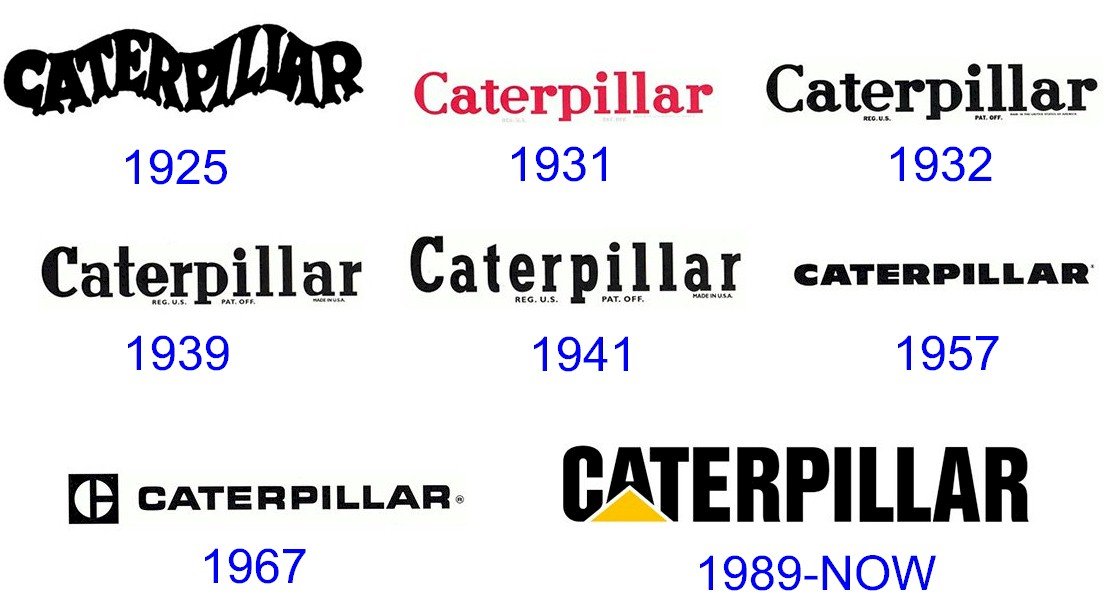 1925 — 1931
1925 — 1931
The company’s very first logo was a wordmark presented in two different color schemes: red on gray or white on black. The name was designed in a wavy inscription to look like a caterpillar’s silhouette. The split ends of the letters represented a caterpillar’s legs. This logo was just the first attempt and lasted about six years.
1931 — 1932
The company’s first logo redesign was done in 1931. A more formal, traditional-looking design replaced the wavy logotype. This time, the designers went for a title case inscription in red, using a fancy serif typeface. Both of the letters “R” had rounded horizontal bars. The font type was based on a traditional font, such as Gianotten Pro or NoraPen Medium, with some modifications in the lines. The color combination of red and water represents the passion, energy, and power of the young corporation, as well as its drive to grow and serve customers with new products.
1932 — 1957
The logotype’s color was changed to black beginning in 1932. Between then and 1957, the company presented about three different variations of the inscription, but with only minor differences. However, by 1957, the wordmark took on a more compact and narrower sans-serif font that looked more modern.
1957 — 1967
The Caterpillar logo gained a totally different look after the 1957 redesign. The all-caps inscription now used the extra-bold sans-serif font that most closely resembles Filmotype Ford. The lettering looked more powerful, conveying the company’s authority and expertise, while the monochrome color choice symbolized the group’s traditional values and approach.
1967 — 1989
The logo iteration of 1967 introduced the first emblem to the brand’s visual identity. The inscription was now accompanied by a moss-green square outline with a white circle in it. This circle had two lines, vertical and horizontal, touching through it. The vertical line split it into two equal halves, while the horizontal line divided the right-sided half into two. The green background has three white segments that combined to stylize the letter “C.”
The wordmark took on a new typeface but still used all-caps. The new sans-serif font looked smooth and sleek and most closely matched Eurostile Unicase Pro Regular. Alternative versions of the emblem appeared on the left of the logotype in black and white.
1989 — Caterpillar Logo Today
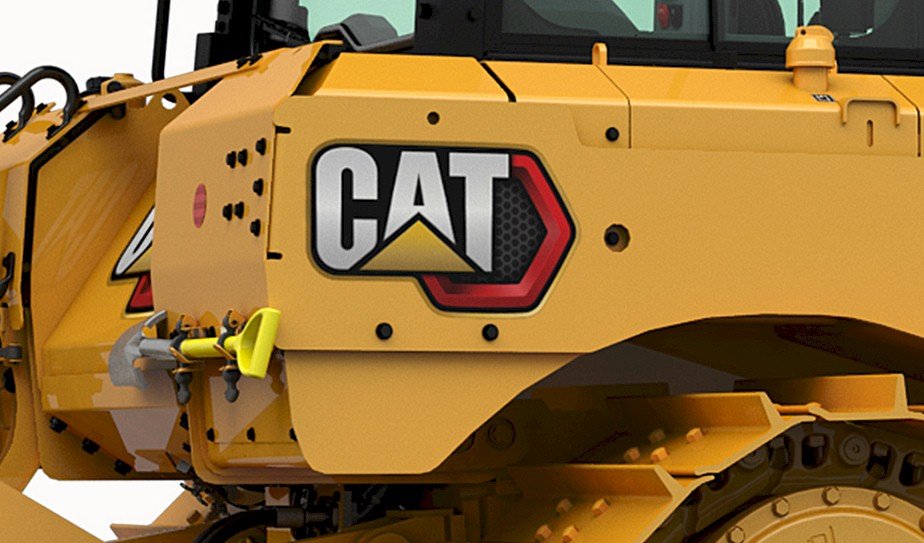 The logo presently in use was introduced in 1989. It incorporates a completely fresh wordmark with a subtle graphical touch inside it. The lettering stays in all capitals and in bold, with a sans-serif typeface that most closely resembles Nimbus Sans L Cond Black and CG Triumvirate Inserat.
The logo presently in use was introduced in 1989. It incorporates a completely fresh wordmark with a subtle graphical touch inside it. The lettering stays in all capitals and in bold, with a sans-serif typeface that most closely resembles Nimbus Sans L Cond Black and CG Triumvirate Inserat.
A wide yellow triangle covers the lower parts of the first 3 letters, producing the effect of a bright accent, making the logo unique and easy to recognize. The symbol uses only the “CAT” lettering with the triangle, and the white, yellow, and black color pallet represents strength, energy, and confidence.
The Caterpillar Logo Design Elements
 Interestingly, the Cat logo is rather new. Back in 1925, when the company was formed, the logo resembled its namesake—the Caterpillar. However, from 1931 up until 1967, the company adopted a rather formal, straightforward shape. The stylized C was introduced in 1967 in a trendier design and stayed on until the latest CAT and Triangle form was introduced in 1989. This move to a more recognizable symbol was possibly one way to capitalize on the construction market that was booming at the time.
Interestingly, the Cat logo is rather new. Back in 1925, when the company was formed, the logo resembled its namesake—the Caterpillar. However, from 1931 up until 1967, the company adopted a rather formal, straightforward shape. The stylized C was introduced in 1967 in a trendier design and stayed on until the latest CAT and Triangle form was introduced in 1989. This move to a more recognizable symbol was possibly one way to capitalize on the construction market that was booming at the time.
Caterpillar Emblem
In 1957, the company finally went for a bold sans-serif typeface in all capitals, which somehow communicated solidity and reliability. The font type was updated in the 1967 iteration, which also introduced a new company emblem (known as Block C) placed to the left of the lettering.
Caterpillar Symbol
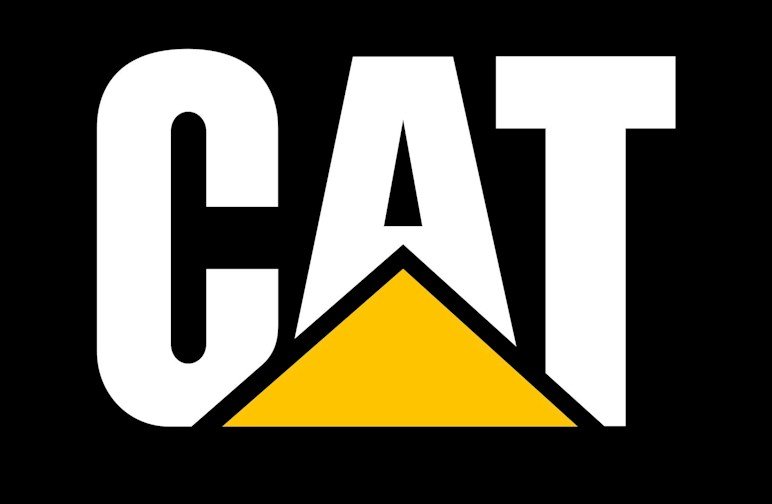 The current Caterpillar symbol was designed in 1989 and is composed of the full company name and a yellow triangle buttressing the “A.” In addition to this logo, there’s a shorter version, the CAT logo. The use of the “CAT” letters implies that consumers are largely aware that “CAT” is short for “Caterpillar.”
The current Caterpillar symbol was designed in 1989 and is composed of the full company name and a yellow triangle buttressing the “A.” In addition to this logo, there’s a shorter version, the CAT logo. The use of the “CAT” letters implies that consumers are largely aware that “CAT” is short for “Caterpillar.”
Caterpillar Font
The current logo uses a typeface that belongs to the Helvetica font family. The specific font is either Helvetica Compressed created by Eduard Hoffmann and Max Miedinger, or Helvetica Inserat Roman designed by Max Miedinger
Caterpillar Color
The brand’s choice of black and yellow has become iconic and has been the CAT logo’s distinctive feature. Earlier logotypes utilized some red, but mostly a monochrome black and white pallet up until 1989.
———
If you are looking to update your current logo or create a new construction logo, try our construction logo maker and create your logo in just minutes. You can download your high-resolution logo files instantly and use them right away. Try it Free.

